Understanding Comics and Superheroes: Delineated
October 19th, 2008 by Stephanie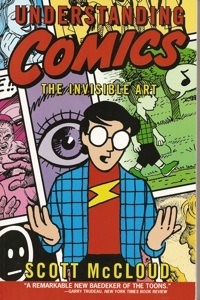 I recently read Scott McCloud’s Understanding Comics, which is a meaty book in graphical layout, about the history of comic books (or, perhaps, of graphical storytelling), and some of the fundamental theories surrounding art+words=story. McCloud breaks down graphic storytelling, giving a solid foundation for understanding the artistic theories as well as the underpinnings of composition.
I recently read Scott McCloud’s Understanding Comics, which is a meaty book in graphical layout, about the history of comic books (or, perhaps, of graphical storytelling), and some of the fundamental theories surrounding art+words=story. McCloud breaks down graphic storytelling, giving a solid foundation for understanding the artistic theories as well as the underpinnings of composition.
What he doesn’t do as well in this book is discuss the story part of the comic book, the development of story arcs, and how words play a role in the telling of a comic book story. This is because, by McCloud’s own admission, a comic book needs to be sequential, but it doesn’t need to have words to tell its story.
As a writer, I would challenge that, but I know my challenge would be hollow. In the right artist’s hands, your script doesn’t need words– the art acts as the words (my own artist sends me the un-lettered version of each page, and I can always see the story, even without the words). But, also as a writer, I know that the story still exists in word, even if it’s not expressed that way in the artwork.
As a reader of comics, I find myself focusing on the words, not the pictures, for the story. I often wonder if that’s a function of not being a very practiced comic book reader (it took me a few months to get the hang of listening to audiobooks, too), or if it’s because I’m a verbal learner, rather than visual. Or if I’m just not attentive enough to the graphic novel, and need to slow down, take my time, to savor the story.
Meanwhile, over at Fractal Hall, they’re posting a meta-analysis of some of the great icons of comic book superheroes, tagging them “delineated.” So far, they’ve delineated Batman, Wonder Woman, Superman, and The Flash, with great insight and introspection.
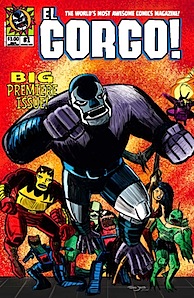
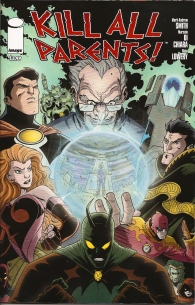 Kill All Parents!, by Mark Andrew Smith, Marcelo Di Chiara, and Russ Lowery, published by Image.
Kill All Parents!, by Mark Andrew Smith, Marcelo Di Chiara, and Russ Lowery, published by Image.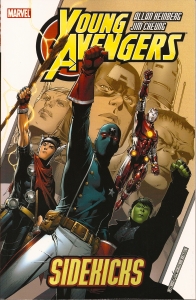
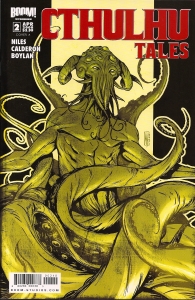
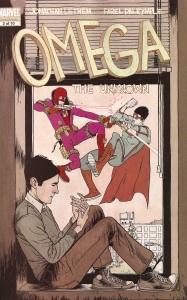 I went into the local comic book shop in Norwood, Massachusetts and said “teenaged superheroes.” After shoving copies of Runaways and a few other interesting series in my hands, one of the customers there suggested Omega: the Unknown by Jonathan Lethem, with art by Farel Dalrymple. I’m coming in at the second issue (2 of 10), so I feel a little bit like I’ve missed some Very Important Stuff (involving robots, trauma, and a hospital bed), but I caught the gist of it about halfway through.
I went into the local comic book shop in Norwood, Massachusetts and said “teenaged superheroes.” After shoving copies of Runaways and a few other interesting series in my hands, one of the customers there suggested Omega: the Unknown by Jonathan Lethem, with art by Farel Dalrymple. I’m coming in at the second issue (2 of 10), so I feel a little bit like I’ve missed some Very Important Stuff (involving robots, trauma, and a hospital bed), but I caught the gist of it about halfway through.